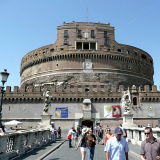
|
Castel Sant'Angelo Lungotevere Castello, 50, 00193 Roma RM, Italy ☎ +39 06 681 9111 Last Updated: 06/25/2024 |
| The Mausoleum of Hadrian, usually known as Castel Sant'Angelo, is a towering cylindrical building in Parco Adriano, Rome, Italy. It was initially commissioned by the Roman Emperor Hadrian as a mausoleum for himself and his family. This architectural masterpiece has a rich history that spans nearly two millennia and has served various purposes throughout the centuries. | |
| - History: Castel Sant'Angelo was originally commissioned by the Roman Emperor Hadrian as a mausoleum for himself and his family. Construction began in 135 AD and was completed in 139 AD. It was later used as a burial place for succeeding emperors and their families. - Architectural Style: The mausoleum is a prime example of Roman architecture and features a cylindrical drum, a large cone-shaped roof, and a statue of the archangel Michael crowning the structure. It was constructed using Roman concrete and faced with travertine marble. - Conversion to a Fortress: In the 6th century, Castel Sant'Angelo was converted into a fortress to protect the city of Rome from external threats. It served this military function for centuries and underwent various modifications to enhance its defensive capabilities. - Papal Residence: During the Renaissance and Middle Ages, the castle was used as a papal residence, with connecting corridors that allowed the pope to escape to the safety of the Vatican in times of danger. It was also used as a prison during this period. - Bridge of Angels: The castle is connected to the city by the Ponte Sant'Angelo (Bridge of Angels), adorned with statues of angels designed by Gian Lorenzo Bernini and his students. The bridge provides a picturesque approach to the castle. - Museum: Today, Castel Sant'Angelo houses a museum that showcases its history and the various roles it has played over the centuries. Visitors can explore the castle's interiors, which include papal apartments, dungeons, and military rooms. - Views: The terrace at the top of the castle offers panoramic views of Rome, including St. Peter's Basilica and the Vatican City. It is a popular spot for taking in the city's skyline. - Events and Exhibitions: The castle often hosts cultural events, temporary exhibitions, and concerts, making it a dynamic cultural venue. - Visiting: Castel Sant'Angelo is open to visitors and is a popular tourist attraction. Tickets are available for purchase, and guided tours are offered to provide insight into the castle's history and architecture. - Access: It is easily accessible by foot from various points in central Rome, such as the Vatican, and is conveniently located near other historic sites. - Nighttime Illumination: The castle is beautifully illuminated at night, creating a stunning and romantic backdrop for evening walks along the Tiber River. Castel Sant'Angelo is not only a symbol of Rome's rich history but also a testament to the architectural and engineering prowess of the Roman Empire. Its transformation over the centuries from a mausoleum to a fortress, papal residence, and museum reflects the city's evolving identity and the enduring significance of its past. | |
Wikipedia
Italy » Rome
Place » Historical Place

|
Rome Place » City Rome is the capital city of Italy. It is also the capital of the Lazio region, the centre of the Metropolitan City of Rome, and a special comune named Comune di Roma Capitale. With 2,860,009 residents in 1,285 km2 (496.1 sq mi), Rome is the country's most populated comune and the third most populous city in the European Union by population within city limits. 135 views 💖 1Italy |
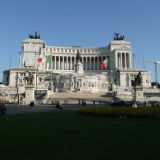
|
Victor Emmanuel Monument Place » Historical Place Officially known as the Monumento Nazionale a Vittorio Emanuele II, the enormous white marble monument that dominates Piazza Venezia was built as a tribute to the first king of a united Italy, Victor Emmanuel II. 467 views 💖 3Altare della Patria, Piazza Venezia, 00186 Roma, Italy |
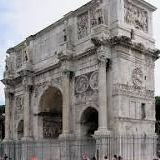
|
Arch of Constantine Place » Historical Place The Arch of Constantine, known in Italian as "Arco di Costantino," is a triumphal arch located in Rome, Italy. It is one of the most well-preserved and iconic Roman triumphal arches, celebrated for its historical significance and intricate reliefs. The arch was commissioned by the Roman Senate to commemorate Constantine's victory over Maxentius at the Battle of Milvian Bridge in AD 312. 444 views 💖 2Via di San Gregorio, Roma, Italy |

|
Villa Borghese Place » Historical Place Villa Borghese is a magnificent historical park and cultural complex located in the heart of Rome, Italy. It is one of the largest public parks in the city and offers a wide range of attractions, including museums, gardens, a lake, and cultural institutions. 517 views 💖 300197 Rome, Metropolitan City of Rome Capital, Italy |
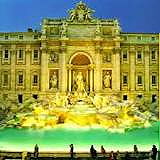
|
Trevi Fountain Place » Historical Place The Trevi Fountain is an 18th-century fountain in the Trevi district in Rome, Italy, designed by Italian architect Nicola Salvi and completed by Giuseppe Pannini and several others. Standing 26.3 metres (86 ft) high and 49.15 metres (161.3 ft) wide, it is the largest Baroque fountain in the city and one of the most famous fountains in the world. 430 views 💖 5Piazza di Trevi, 00187 Roma, Italy |
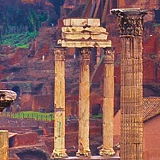
|
Roman Forum Place » Historical Place The Roman Forum, known in Italian as "Foro Romano," is a historic and archaeological site in the heart of Rome, Italy. It was once the center of political, religious, and commercial life in ancient Rome and is now a prominent archaeological complex that offers visitors a glimpse into the city's rich history. 526 views 💖 10Via della Salaria Vecchia, 5/6, Roma, Italy |
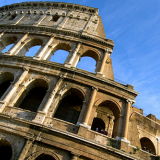
|
Colosseum Place » Historical Place The Colosseum is an iconic amphitheater located in Rome, Italy, and is one of the most recognizable landmarks in the world. Also known as the Flavian Amphitheatre, it was built in AD 70-80 and is considered one of the greatest engineering feats of the ancient Roman Empire. 515 views 💖 10Piazza del Colosseo, 1, 00184 Roma, Italy |

|
Spanish Steps Place » Historical Place The ‘Spanish steps’ in Rome, built in Rococo style between 1723 and 1726, are the steps that lead from the Piazza di Spagna square to the French monastery church Trinita dei Monti. There are 135 steps and three different terraces, referring to the Holy Trinity. The top of the stairs near the Egyptian obelisk offers a beautiful view, albeit one shared with throngs of other tourists. 55 views 💖 1Piazza di Spagna, 00187 Roma RM, Italy |
Write a Review :
Castel Sant'Angelo
|
|
